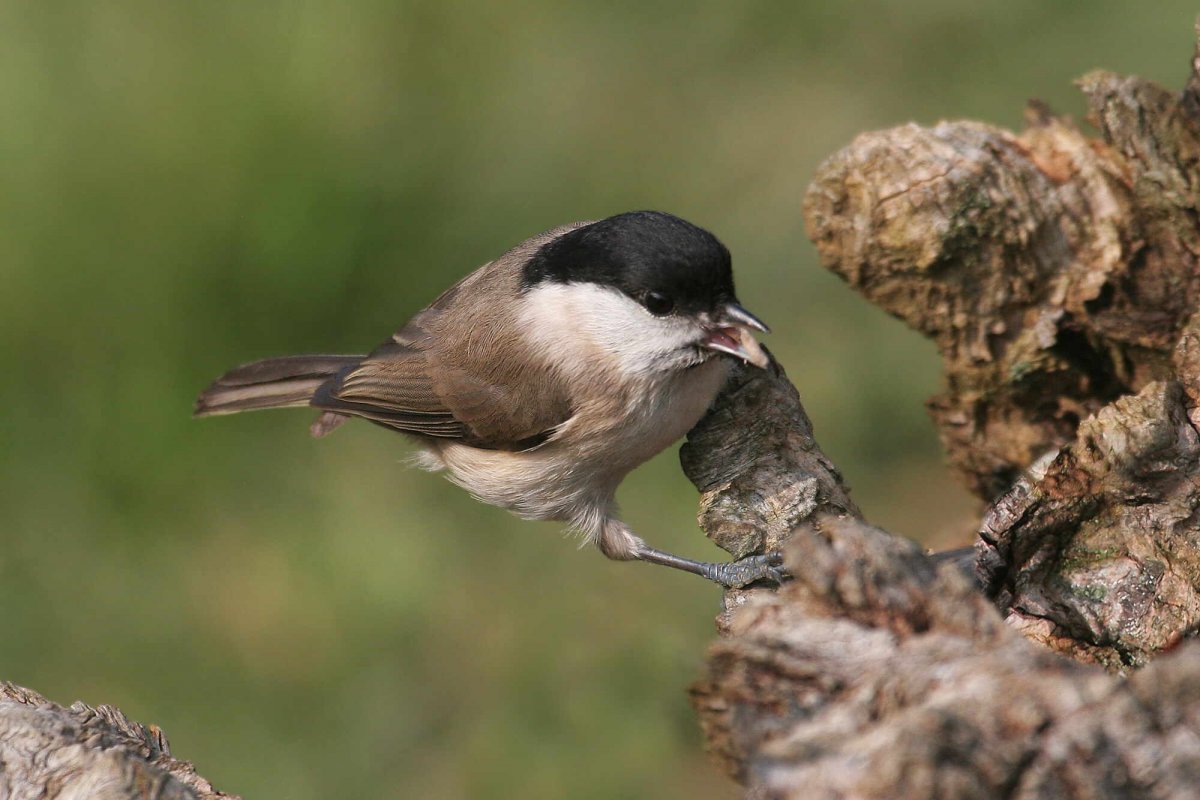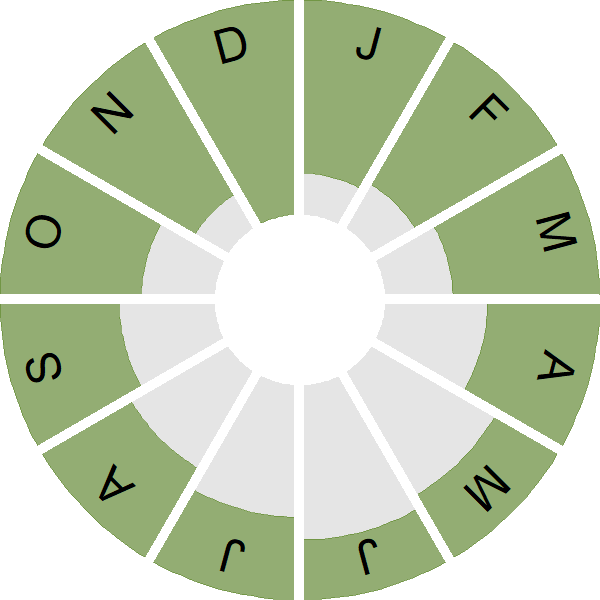Marsh Tit
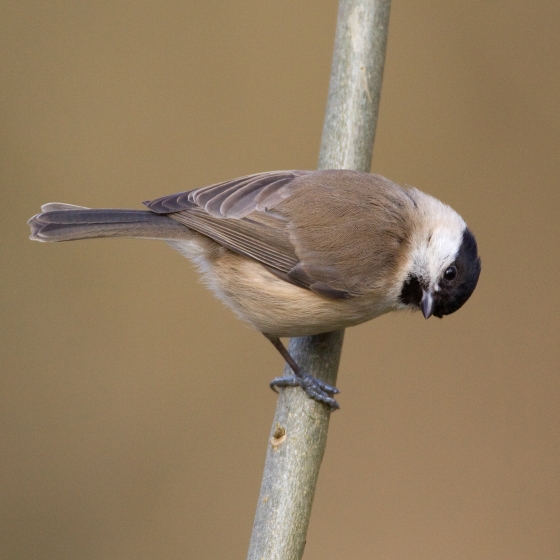
Introduction
A bold character with a scolding 'pitchuu' call, the Marsh Tit has declined significantly and has been Red-listed in the UK since 2022.
Widely distributed in England and Wales, the Marsh Tit favours mature deciduous woodland habitat with some understorey in which to forage. Never numerous, the species is seen mostly in singles or pairs, and adults will stay on or near territory all year round. Birds will also visit garden bird tables. The Marsh Tit is very similar in appearance to the Willow Tit, and care is needed to identify these species in the field.
The species nests in natural holes (although may take to nest boxes) and normally lays a single clutch of seven to nine eggs each spring. Young birds disperse a few kilometres from their parents' territory. The UK population shows a downward trend since the mid-1960s, possibly underpinned by a negative trend in annual survival associated with habitat degradation.
- Our Trends Explorer gives you the latest insight into how this species' population is changing.

Key Stats
Identification
ID Videos
This section features BTO training videos headlining this species, or featuring it as a potential confusion species.
GBW: Coal Tit and Marsh Tit
Marsh and Willow Tits
Songs and Calls
Call:
Status and Trends
Conservation Status
Population Change
Marsh Tit abundance has declined almost continuously since BTO monitoring began. Because of worsening decline, the species' UK conservation listing was upgraded from amber to red in 2002. Atlas surveys during 2007-11 showed continuing loss of breeding and winter range since 1968-72, especially in northern England and the north Midlands (Balmer et al. 2013). Conservationists are keen to prevent Marsh Tit replicating the deeper decline and regional range losses shown already by Willow Tit, and are focusing on providing more mature woodland and promoting woodland connectivity (Broughton & Hinsley 2015). The trend across Europe has been broadly stable since 1980, with a decline in the 1980s and 1990s being followed by a partial recovery (PECBMS: PECBMS 2020a>).
Distribution
Marsh Tits are absent from Ireland and most of Scotland, but are widespread in England and Wales, albeit with significant gaps in much of northwest England, northwest Wales, the north Midlands and the Fens.
Occupied 10-km squares in UK
or view it on Bird Atlas Mapstore.
or view it on Bird Atlas Mapstore.
European Distribution Map
Distribution Change
The population is undergoing a continuing decline in Britain, reflected in a tendency for shrinkage at the edges of the gaps in the range, where distributions are less concentrated and changes in apparent occupancy are more likely to occur.
Change in occupied 10-km squares in the UK
or view it on Bird Atlas Mapstore.
or view it on Bird Atlas Mapstore.
Seasonality
Marsh Tit is a localised resident and recorded throughout the year.
Weekly pattern of occurrence
The graph shows when the species is present in the UK, with taller bars indicating a higher likelihood of encountering the species in appropriate regions and habitats.

Habitats
Breeding season habitats
Relative frequency by habitat
The graph shows the habitats occupied in the breeding season, with the most utilised habitats shown at the top. Bars of similar size indicate the species is equally likely to be recorded in those habitats.
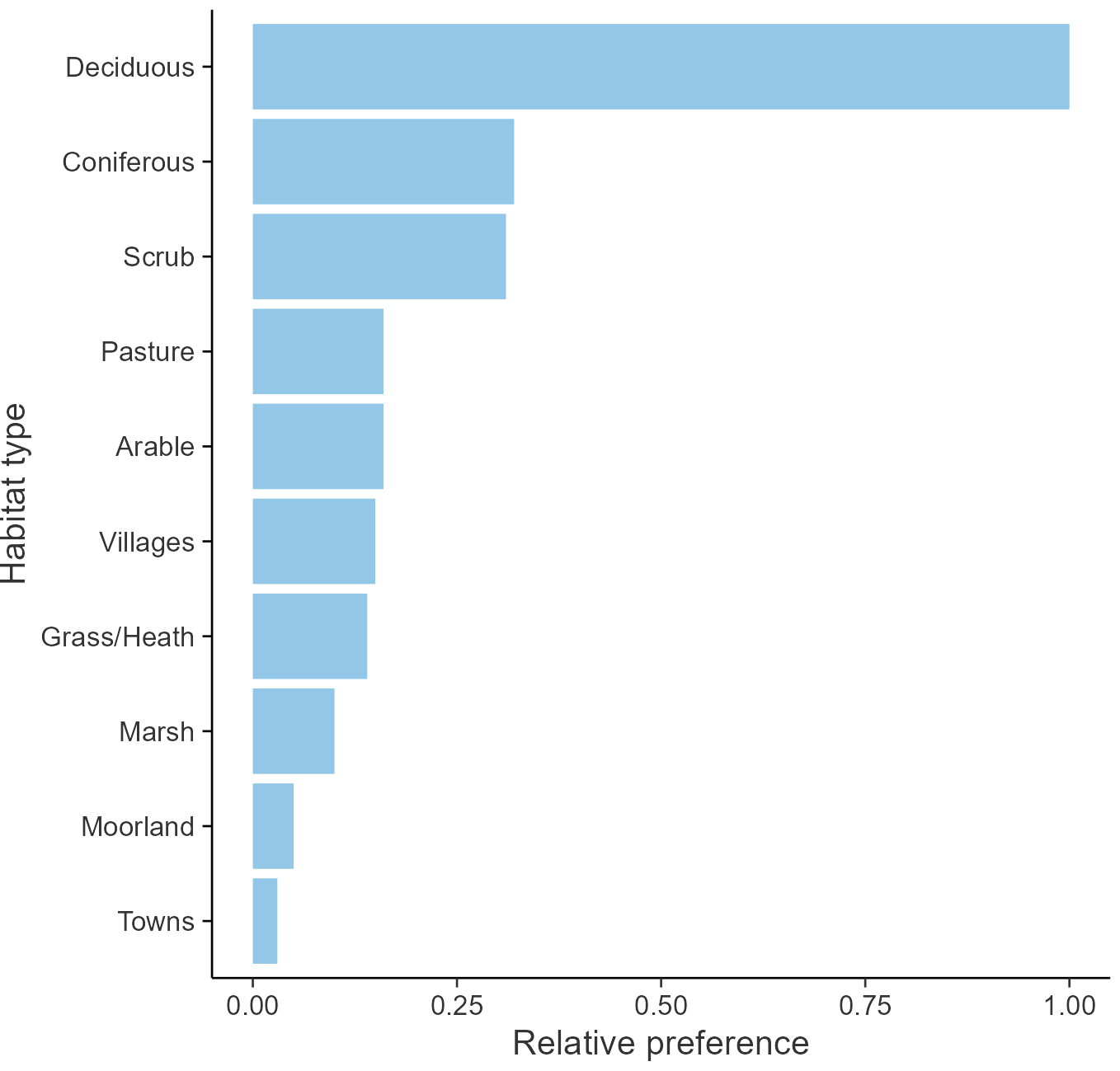
Movement
Britain & Ireland movement
Foreign locations of birds ringed or recovered in Britain & Ireland
Dots show the foreign destinations of birds ringed in Britain & Ireland, and the origins of birds ringed overseas that were subsequently recaptured, resighted or found dead in Britain & Ireland. Dot colours indicate the time of year that the species was present at the location.
- Winter (Nov-Feb)
- Spring (Mar-Apr)
- Summer (May-Jul)
- Autumn (Aug-Oct)

Biology
Productivity and Nesting
Nesting timing
Egg measurements
Clutch Size
Incubation
Fledging
Survival and Longevity
Survival is shown as the proportion of birds surviving from one year to the next and is derived from bird ringing data. It can also be used to estimate how long birds typically live.
View number ringed each year in the Online Ringing Report.
lifespan
Survival of adults
Survival of juveniles
Biometrics
Wing length and body weights are from live birds (source).
Wing length
Body weight
Ring Size
Classification, names and codes
Classification and Codes
- Order: Passeriformes
- Family: Paridae
- Scientific name: Poecile palustris
- Authority: Linnaeus, 1758
- BTO 2-letter code: MT
- BTO 5-letter code: MARTI
- Euring code number: 14400
Alternate species names
- Catalan: mallerenga d'aigua
- Czech: sýkora babka
- Danish: Sumpmejse
- Dutch: Glanskop
- Estonian: salutihane e. sootihane
- Finnish: viitatiainen
- French: Mésange nonnette
- Gaelic: Cailleachag-lòin
- German: Sumpfmeise
- Hungarian: barátcinege
- Icelandic: Laufmeisa
- Irish: Meantán Lathaí
- Italian: Cincia bigia
- Latvian: purva zilite
- Lithuanian: paprastoji pilkoji zyle
- Norwegian: Løvmeis
- Polish: sikora uboga
- Portuguese: chapim-palustre
- Slovak: sýkorka hôrna
- Slovenian: mocvirska sinica
- Spanish: Carbonero palustre
- Swedish: entita
- Welsh: Titw'r Wern
Research
Causes of Change and Solutions
Causes of change
There is good evidence that changes in the habitat quality of woodlands, particularly a loss of understorey, have been responsible for the decline in Marsh Tits. Analysis of the BTO's ring-recovery archive provides evidence that there has been a significant negative trend in annual survival rates during the period of decline, although this is based on a small sample size.
Further information on causes of change
Analysis of the BTO's ring-recovery archive provides evidence that there has been a significant negative trend in annual survival rates during the period of decline, although this is based on a small sample size. The absence of any reduction in breeding performance as the population has declined supports a reduction in annual survival as the demographic mechanism (Siriwardena 2006). Nest failure rates have fallen during the period of decline, but no trend is evident in the number of fledglings per breeding attempt.
One hypothesis relating to the causes of decline is that changes in woodland understorey have reduced habitat quality, due to increased browsing by deer (Perrins 2003, Fuller et al. 2005). Carpenter (2008) and Carpenter et al. (2010) conducted a detailed study providing good evidence that Marsh Tits were more likely to locate their territories in sections of woodland with more understorey cover. Carpenter found that birds in territories with more understorey raised more and heavier young than did birds in territories with less understorey, although this was based on only one year of data. The same study reported that understorey and low canopy sections were also important during winter while Hinsley et al. (2007) provide further evidence that this was important, showing that that Marsh Tits were selecting the understorey and habitat lower down in the woodland canopy. Another field study conducted by Broughton et al. (2006), however, did not find any difference in the amount of shrub layer in Marsh Tit territories compared to pseudo-territories, although this was from just one site and the authors noted that the understorey there was unusually healthy and complete, perhaps explaining this result.
A reduction in habitat quality through fragmentation is another possible factor that has contributed to declines, although there has been little fragmentation of woodland in a gross sense in recent years. Nevertheless, Hinsley et al. (1995) found that Marsh Tits need a minimum wood size of 0.5 ha and it's possible that habitat deterioration has reduced effective habitat patch size.
Another hypothesis concerning causes of decline relates to competition and nest predation. Marsh Tit is subdominant to both Great Tit and Blue Tit but Siriwardena (2006) found no evidence for population effects of the Marsh Tit being outcompeted for natural nest cavities. Similarly, the same study found no evidence that avian nest predation is a major factor in the long-term decline as Marsh Tit abundance was not significantly related to abundance in the previous year of any of the nest predators considered (Siriwardena 2006). Amar et al. (2006) found no association between population change and grey squirrel abundance and adding to this, Smart et al. (2007) conducted an initial analysis and showed that Marsh Tit declines were also unlikely to be caused by predation by grey squirrel, as presence and abundance of Marsh Tit was positively related to squirrel density.
Information about conservation actions
Marsh Tits have large territories and hence require large, mature woodlands with extensive coverage by understorey vegetation (Broughton et al. 2006, 2012; Hinsley et al. 2007). At a local level, therefore, actions to encourage woodland maturation and to improve the quantity and quality of understorey and shrub habitat in woodland may benefit Marsh Tits. These might include a reduction in active management clearance of the shrub layer, and control of deer populations which may be affecting the understorey through grazing. A minimum wood size of 0.5 hectares is believed to be required for this species (Hinsley et al. 1995), and habitat deterioration may have reduced effective habitat size.
On a wider scale, given the requirement for large territories, landscape scale management is likely to be important to maintain or restore connectivity between suitable woodlands and hence ensure that dispersing juveniles are able to connect with surrounding populations in fragmented landscapes.
Publications (3)
Temporal avoidance as a means of reducing competition between sympatric species
Author: Maziarz, M., Broughton, R.K., Beck, K.B., Robinson, R.A. & Sheldon, B.C.
Published: 2023
Human activities modify the availability of natural resources for other species, including birds, and may alter the relationships between them. The provision of supplementary food at garden feeding stations, for example, might favour some species over others and change the competitive balance between them. This paper investigates the behavioural responses to competition of the Marsh Tit, a species that is subordinate to both the Blue Tit and the Great Tit.
24.05.23
Papers
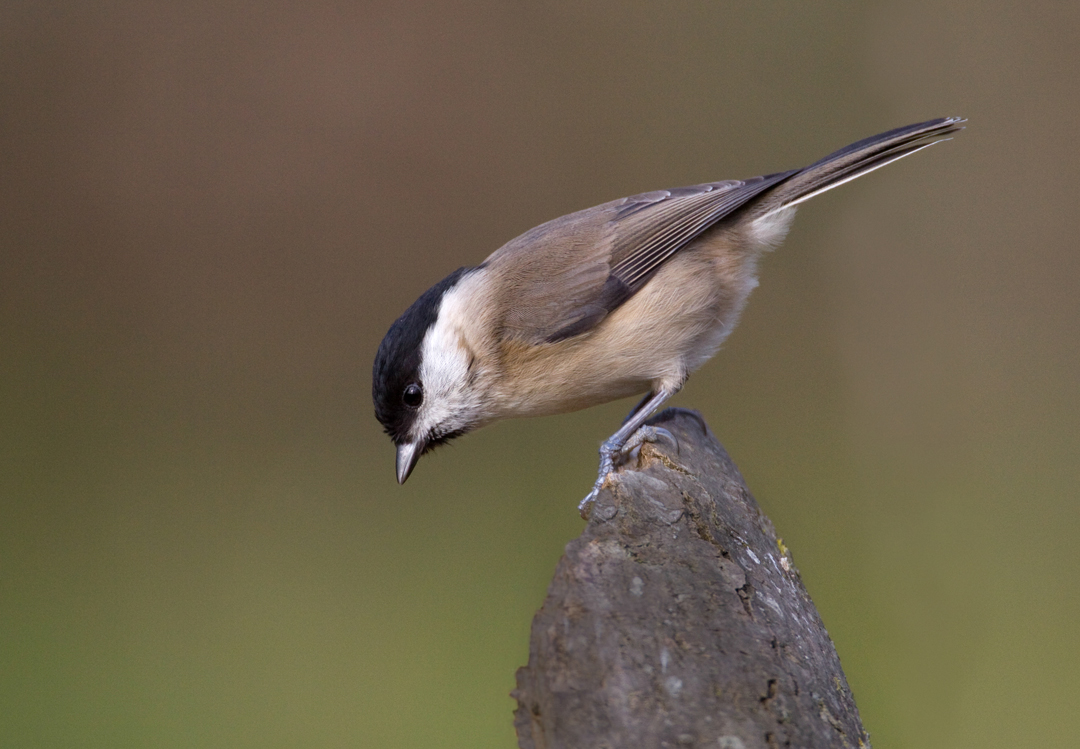
A method to evaluate the combined effect of tree species composition and woodland structure on indicator birds
Author: Dondina, O., Orioli. V., Massimino, D., Pinoli, G. & Bani, L.
Published: 2015
Providing quantitative management guidelines is essential for an effective conservation of forest-dependent animal communities. Traditional forest practices at the stand scale simultaneously alter both physical and floristic features with a negative effect on ecosystem processes. Thus, we tested and proposed a method to define forestry prescriptions taking into account the combined effect of woodland structure and tree species composition on the presence of four bird indicator species (Marsh Tit Poecile palustris, European Nuthatch Sitta europaea, Short-toed Tree-creeper Certhya brachydactyla and Blue Tit Cyanistes caeruleus). The study was carried out in Lombardy (Northern Italy), from 2002 to 2005. By using a stratified cluster sampling design, we recorded Basal Area, one hundred tree trunk diameters at breast height (DBH) and tree species in 160 sampling plots, grouped in 23 sampling areas. In each plot we also performed a bird survey using the point count method. We analyzed data using Multimodel Inference and Model Averaging on Generalized Linear Mixed Models, with species presence/absence as the response variable, sampling area as a random factor and forest covariates as fixed factors. In order to test our method, we compared it with other two traditional approaches, which consider structural and tree floristic variables separately. Model comparison showed that our method performed better than traditional ones, in both the evaluation and validation processes. Based on our main results, in deciduous mixed forest where the exploitation demand is limited, we recommend maintaining at least 65 trees/ha with DBH>45cm. In particular, we advise keeping 70 trees/ha with DBH>50cm in chestnut forests and 300 trees/ha with DBH 20–30cm in oak forests. Conversely, in more exploited oak forests, we advise maintaining at least 670 trees/ha with DBH 15–30cm in chestnut forests and 100 trees/ha with DBH 10–15cm.
01.04.15
Papers
Morphology, geographical variation and the subspecies of Marsh Tit Poecile palustris in Britain and Central Europe
Author: Broughton, R.K., Burgess, M.D., Dadam, D, Hebda, G., Bellamy, P.E. & Hinsley, S.A.
Published: 2016
Tit taxonomy is complex, with several species and subspecies reclassified many times since they were first formally described. This paper uses data collected during ringing to examine subspecies in Marsh Tits, with conservation implications for this declining species.
31.03.16
Papers Bird Study
